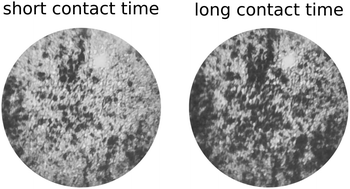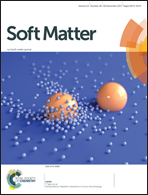Rubber contact mechanics: adhesion, friction and leakage of seals
Abstract
We study the adhesion, friction and leak rate of seals for four different elastomers: Acrylonitrile Butadiene Rubber (NBR), Ethylene Propylene Diene (EPDM), Polyepichlorohydrin (GECO) and Polydimethylsiloxane (PDMS). Adhesion between smooth clean glass balls and all the elastomers is studied both in the dry state and in water. In water, adhesion is observed for the NBR and PDMS elastomers, but not for the EPDM and GECO elastomers, which we attribute to the differences in surface energy and dewetting. The leakage of water is studied with rubber square-ring seals squeezed against sandblasted glass surfaces. Here we observe a strongly non-linear dependence of the leak rate on the water pressure ΔP for the elastomers exhibiting adhesion in water, while the leak rate depends nearly linearly on ΔP for the other elastomers. We attribute the non-linearity to some adhesion-related phenomena, such as dewetting or the (time-dependent) formation of gas bubbles, which blocks fluid flow channels. Finally, rubber friction is studied at low sliding speeds using smooth glass and sandblasted glass as substrates, both in the dry state and in water. The measured friction coefficients are compared to theory, and the origin of the frictional shear stress acting in the area of real contact is discussed. The NBR rubber, which exhibits the strongest adhesion both in the dry state and in water, also shows the highest friction both in the dry state and in water.



 Please wait while we load your content...
Please wait while we load your content...